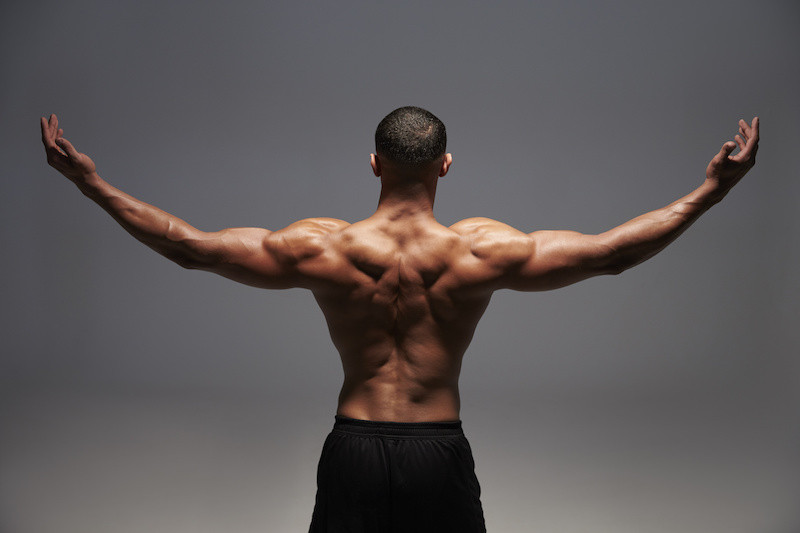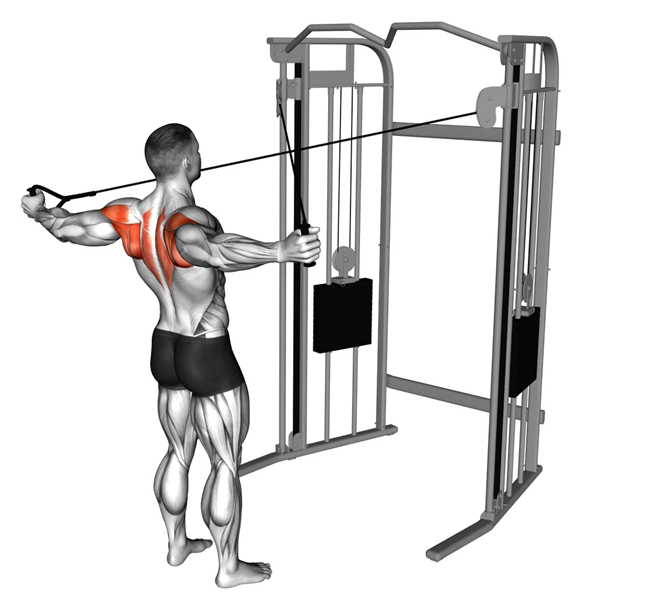Reverse Pec Deck: The Rear Delt Machine Every Bodybuilder Needs
Walk into any gym and you’ll see lifters hammering presses, lateral raises, and front delt movements. But when it comes to the rear delts, most people either skip them or half-heartedly throw in a few sets of dumbbell flies.
The result? Rounded shoulders, weak posture, and physiques that look big from the front but flat from behind.
If you want to complete your shoulder development and build that 3D look, you can’t afford to neglect your rear delts. And one of the best tools for isolating them with precision is the Reverse Pec Deck machine.
Unlike dumbbells, which lose tension at the bottom, or cables, which require stability, the Reverse Pec Deck gives you a fixed, controlled path with constant tension.
This makes it ideal for beginners learning to feel their rear delts — and for advanced lifters looking to torch them with high-volume hypertrophy work.
This article breaks down how to master the Reverse Pec Deck: the muscles it works, how to perform it correctly, common mistakes, variations, programming strategies, and bodybuilder-specific tips for building thick, round shoulders.
Muscles Worked
The Reverse Pec Deck primarily isolates the posterior deltoid but also recruits other upper back stabilizers.
- Primary Muscle:
- Posterior deltoid (rear delt) – shoulder horizontal abduction.
- Secondary Muscles:
- Rhomboids – scapular retraction.
- Middle trapezius – stabilizing the scapula.
- Lower trapezius – assist in scapular depression.
- Rotator cuff – stabilizing the shoulder joint.
👉 This machine makes it nearly impossible to “cheat” by rowing with lats or swinging with traps, meaning more direct rear delt tension.
How to Perform the Reverse Pec Deck (Step by Step)
Setup
- Sit facing the pec deck machine (chest against pad).
- Adjust seat height so handles are at shoulder level.
- Select a moderate weight you can control.
- Grip handles with palms facing inward or downward (depending on machine design).
Execution
- Start with arms extended in front of you, elbows slightly bent.
- Brace core and keep chest pressed firmly into pad.
- Open arms outward in a wide arc, leading with elbows.
- Pull handles back until arms are extended out to sides, in line with shoulders.
- Squeeze rear delts and traps at peak contraction.
- Slowly return to starting position under control.
Breathing
- Inhale at start.
- Exhale as you open arms and contract rear delts.
Tempo Recommendation
- Concentric (open): 1–2 seconds.
- Peak squeeze: 1–2 seconds.
- Eccentric (return): 3 seconds.
Why the Reverse Pec Deck Works
- Fixed Path = Strict Form
- Unlike dumbbells, the machine guides movement, preventing cheating.
- Constant Tension
- Delts are loaded throughout the entire range.
- Joint-Friendly
- Smooth resistance protects shoulders from jerky movements.
- Scalable
- Easy to adjust weight up or down depending on your training goal.
Common Mistakes and Fixes
- Using Too Much Weight
- Mistake: Jerking or leaning back to move handles.
- Fix: Lighten load, prioritize rear delt tension.
- Shrugging Shoulders
- Mistake: Letting traps dominate.
- Fix: Keep shoulders depressed—imagine pushing them “into your back pockets.”
- Rowing Instead of Flying
- Mistake: Bending elbows too much, turning it into a row.
- Fix: Keep elbows soft but fixed, open arms outward, not backward.
- Partial Range of Motion
- Mistake: Stopping halfway forward or backward.
- Fix: Complete the full arc for maximum contraction and stretch.
- Leaning Chest Off Pad
- Mistake: Using torso movement for momentum.
- Fix: Keep chest pressed firmly into support.
Variations and Alternatives
- Neutral Grip (Palms Facing Each Other)
- Standard and joint-friendly, great for isolating rear delts.
- Pronated Grip (Palms Down)
- Slightly more trap activation, still great for rear delts.
- Single-Arm Reverse Pec Deck
- Perform one arm at a time to fix imbalances.
- Alternatives:
- Dumbbell Rear Delt Fly – free-weight version.
- Cable Rear Delt Fly – constant tension alternative.
- Band Pull-Aparts – simple, high-rep finisher.
Programming Guidelines
For Strength (Performance Focus)
While the pec deck isn’t a heavy strength builder, strong rear delts improve pressing stability and joint health.
- Sets/Reps: 3–4 sets of 8–12 reps.
- Rest: 90 seconds.
- Load: Moderate, strict control.
- Placement: After compound pulls or presses.
For Hypertrophy (Bodybuilding Focus)
This is where the Reverse Pec Deck shines — it’s built for volume, control, and the pump.
- Sets/Reps: 3–5 sets of 12–20 reps.
- Tempo: Slow eccentric, peak squeeze.
- Rest: 45–75 seconds.
- Techniques: Drop sets, rest-pause, 100-rep burnouts.
Programming Example (Shoulder or Pull Day)
- Overhead Press: 4×6
- Dumbbell Lateral Raise: 3×12–15
- Dumbbell Rear Delt Fly: 3×15
- Reverse Pec Deck: 4×12–20 (controlled, pump-focused)
- Face Pulls: 3×12
👉 This ensures rear delts get hammered from multiple angles.
Bodybuilder’s Tips
- Don’t chase numbers. This isn’t a PR lift—leave ego at the door.
- Control the eccentric. 3 seconds down maximizes tension.
- Add peak holds. Pause 1–2 seconds at full contraction.
- Use high reps. Rear delts thrive on 15–20+ rep sets.
- Finish workouts with it. Great for flushing blood into rear delts after compounds.
Strength vs Aesthetic Outcomes
- Strength-Oriented Lifters: The Reverse Pec Deck reinforces pressing and pulling stability by strengthening rear delts and scapular control.
- Aesthetic-Oriented Lifters: This is a hypertrophy powerhouse — high-rep pump work fills out the rear delts, balances shoulder development, and enhances the 3D look.
👉 Many pro bodybuilders make the Reverse Pec Deck a staple rear delt finisher, often doing 5–6 high-rep sets for maximum pump.
Practical Takeaways
- The Reverse Pec Deck is one of the most effective rear delt isolators.
- Fixed path makes it beginner-friendly and cheat-proof.
- Works best with moderate-to-light weight, high reps, and slow tempo.
- Ideal for bodybuilding-focused rear delt hypertrophy and symmetry.
- Pair with dumbbells or cables for a complete rear delt program.
Conclusion
The Reverse Pec Deck is more than just a machine exercise — it’s one of the best tools for rear delt growth. With its fixed path, constant tension, and joint-friendly setup, it allows you to isolate the posterior delts with surgical precision.
For strength athletes, it provides stability and injury prevention. For bodybuilders, it’s a pump machine that helps build the wide, 3D shoulders that define elite physiques.
👉 Bottom line: Don’t neglect the Reverse Pec Deck. Use it as a staple finisher for rear delt hypertrophy, chase the pump, and watch your shoulders transform from flat to fully 3D.





